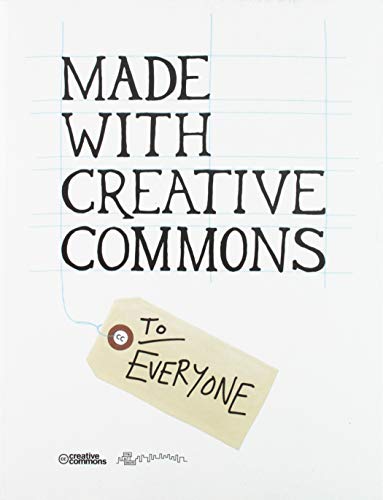


Made With Creative Commons
O**Y
Changing the rules of engagement
Clearly "a reader" (who is not even a verified purchaser) wants to grind an axe against this book because 1) the authors do not meet certain narrow definitions of "open" according to a reader and 2) they did not write the book in a reader's head. Both of these complaints are irrelevant. This book is not about free software, which I refuse to call open source because hey, I've read RMS's Free Software Free Society too and know that the very notion of "open" in the free software world is a constant canard. If you want dogmatic definitions, you can get them from Richard Stallman much better than a rubbish review on Amazon.What the book is about in Part 1 is the authors' discovery that there is no fixed definition of an open business model. In fact many of the companies and people interviewed dislike the phrase. Instead they provide a historical overview of the idea of a commons going back to the days before the first enclosure movement up to the current digital revolution, and how the idea of the commons powers the current ideas of a sharing economy and promotes innovation. Paul Stacey's research here is excellent, and his footnotes are beyond sufficient. Sarah Pearson's section is more methodological. It begins by saying that "made with creative commons" is not about how to make money with CC licenses at all, and indeed states there is no formula because the game is too new and anyway that's not what CC is about. CC is about, in Ryan Merkley's words, building a vibrant, usable commons, powered by collaboration and gratitude. The licenses may be good for business but that is not why businesses use them. They use them because they believe in something more than financial profit.Part 2 is filled with two dozen case histories. These are also brilliant interviews with creative people in a variety of different businesses: education, industrial design, gaming, academic publishing, self-publishing, data visualization, even museum and library science. Their reasons for using CC licenses vary widely but over and over you will read that "it's not about money." Money is, as one says, fuel for creativity not the goal of creativity. That all of them are successful at what they do is deeply impressive.This is an excellent book and there is nothing else like it on the market, not Whitehurst, not Chesbrough, not Ostrom -- all of whom are cited. And the book itself is released under an open license (which I say just to annoy people who moan about a lack of a fixed definition of openness).If you are hesitating about buying it, why not download the PDF of the book freely online (wait, does it preserve your freedom? can't we define free differently? etc etc)? Any given read of three pages will tell you what you're in for.
S**E
Five Stars
This book is so timely and important! I'm trying to get it to more folks to read.
G**U
It's not about making profit, it's about caring and sharing
Can you make money with Creative Commons-licensed works? Although the question is complex, the short and brutal answer is NO, the licenses themselves are not the engine of profit. But this is not the point of CC-licensed works. Paul Stacey and Sarah Hinchliff Pearson started on a journey to search for business models of artists and creators who embraced CC licenses. Instead of a business manual, the book “Made with Creative Commons” is philosophy in a nutshell: it’s about how the sharing economy is starting to change the world little by little, how we go back to the commons and it’s also about a new relationship between humans, where we are all creators and consumers in the same time.The book “Made with Creative Commons” is a mix of documentation, research and interviews. Paul Stacey and Sarah Hinchliff Pearson begin by going back in history and explaining to us where the commons started and what are the digital commons. A short history of Creative Commons follows, with an emphasis on the benefits of the CC licenses. For those unfamiliar with the licenses, there are some technical explanations. Then the book turns into a user manual, with a chapter dedicated to the different revenue streams available to creators who license their work with CC. The final and most colourful part are the case studies.The book itself is an example of a successful project: funded on Kickstarter, the book was published in all digital formats and is distributed for free, but the physical copy is available at a small price on Amazon.The authors came to the conclusion that people who prefer CC licenses over traditional copyright models are individuals and organisations who think beyond profit, people who want to make a difference.
G**F
Muy buen libro para comprender un fenómeno mundial
Para mucha gente es difícil entender por qué queremos utilizar Creative Commons. Con estas 24 experiencias tan diversas, la explicación resulta mucho más simple.
Trustpilot
1 month ago
1 week ago